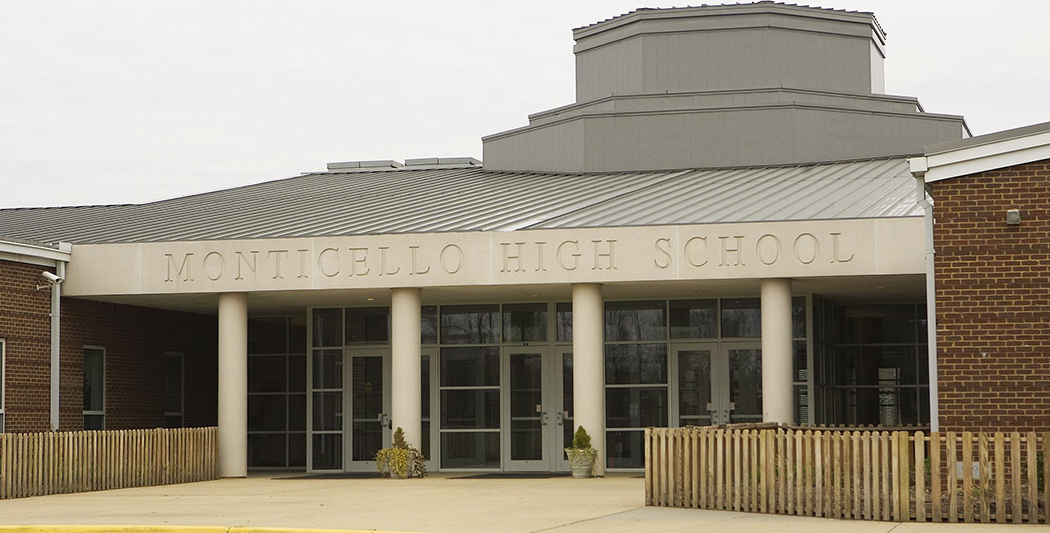It’s been over a year since the coronavirus forced local schools to shut their doors and teach thousands of students online. Thanks to a significant drop in COVID cases and the arrival of the vaccine, many students and teachers have returned to the classroom, with health and safety precautions in place. Some students, however, continue to learn from home—and may have the option to do so permanently.
In addition to offering in-person instruction five days a week, Albemarle County Public Schools plans to launch an entirely virtual school this fall, equipped with its own principal, teachers, and students. Though virtual learning has been difficult for many students and families, county teachers say some children will benefit from a permanent virtual option.
Unlike current virtual instruction, the standalone school will offer a full schedule of synchronous classes taught by live instructors. And students will be required to have their webcams on at all times.
“Students who are learning online will still be able to be a part of the base school community,” explains county schools’ spokesman Phil Giaramita. “They can participate in athletics and clubs. They can run for student government. They still have all of the capabilities of the social part of school.”
Because the online school will have its own set of teachers, students won’t have to deal with the challenges that come with hybrid learning. In order to comply with social distancing measures, those in fourth grade and up are currently alternating between in-person and virtual instruction, combined with independent assignments. Some teachers have been required to teach students in the classroom and on Zoom at the same time, a set up Albemarle High School geography teacher Chris Bunin describes as “really challenging.”
According to the ACPS’s latest survey, eight to 10 percent of county families—1,000 to 1,400 students—are interested in enrolling in the online school. More than 80 percent of the division’s families responded to the survey.
Since March 15, pre-kindergarteners through third-graders have been able to receive in-person instruction four days a week, while fourth grade and up can come into the classroom two days a week.
But 42 percent of the school division—around 5,000 students—are sticking with online learning for various reasons. While some do not yet feel safe returning to the classroom, others have learned and performed better in a virtual setting.
Virtual learning has been especially helpful for English language learners, explains ESOL instructor Gini Knight, who currently teaches virtual classes at Monticello High School.
A lot of my students actually do better virtually, because the nature of language learning is you need to see someone’s mouth, and you can’t do that very easily when someone has a mask on.
Gini Knight, Monticello High School ESOL teacher
“A lot of my students actually do better virtually, because the nature of language learning is you need to see someone’s mouth, and you can’t do that very easily when someone has a mask on,” says Knight, pointing to the mask mandate the school division must follow.
Zoom breakout rooms have also made it easier for students to collaborate on projects, and for teachers to work on-on-one with those who are struggling.
“They all can see the exact same thing at the same time. They can share their screens. It’s almost as though we’re closer together. And it’s more of a shared experience,” Knight says.
On the elementary level, third grade teacher Kate Gerry has seen her “wiggly kids” benefit a lot from virtual learning.
“They’re just pacing their room while I’m talking. They’ll come over and unmute and tell me what they’re thinking and keep pacing. And they’re totally there and attending and it’s not an issue, since no one is sitting right next to them getting bumped into,” says Gerry, who currently teaches virtual classes at Broadus Wood Elementary.
“They can also read out loud and there’s no one next to them who can’t concentrate,” she adds.
Teachers have found online learning to be helpful for students with social anxiety, who may prefer to work in their own private space. The all-virtual school will also be beneficial for those who are homebound due to a prolonged illness or injury.
When the pandemic shuttered schools last spring, nearly 1,000 households in the school division did not have access to high-speed internet. To bridge this digital divide, ACPS purchased hotspots for families in need, and partnered with Comcast to provide a subsidized low-cost internet plan.
“With the technology capabilities we’ve given to families, [the online school] wouldn’t be exclusionary. Almost anyone who wants to participate would be able to,” says Giaramita.
In the coming weeks, principals will reach out to families about their plans for the fall, but parents will have the option to change their minds once the school year begins. If there is enough demand, the school division hopes to make the online school a permanent option for all students.
The division’s plans for next school year will be discussed at the next school board meeting on May 6.
